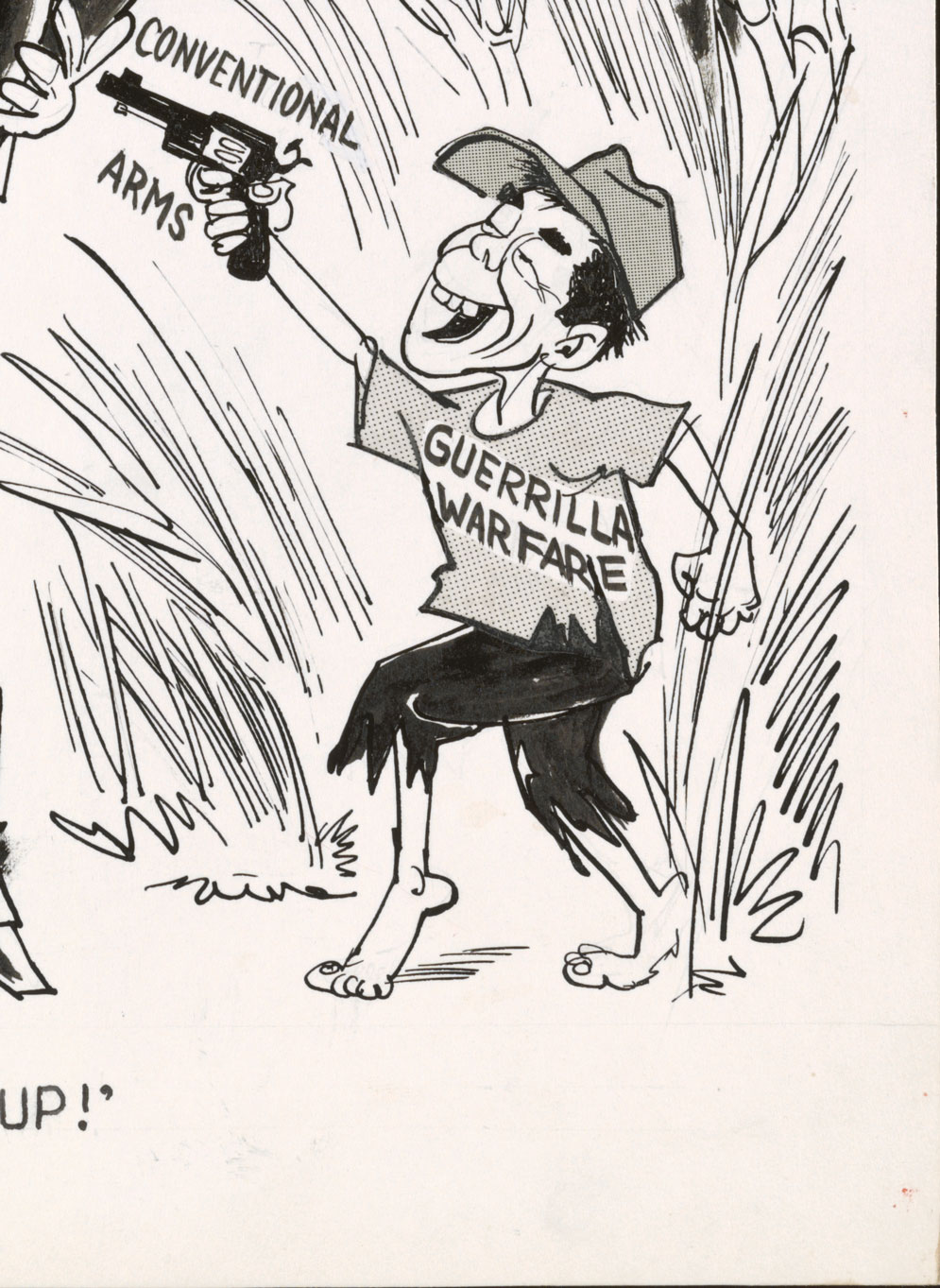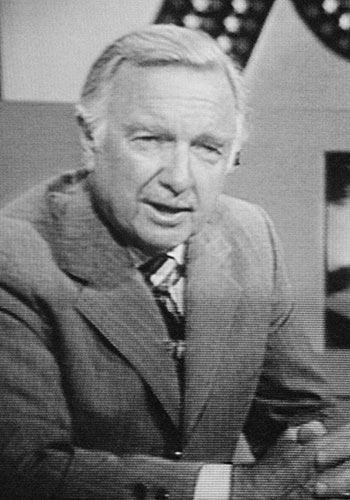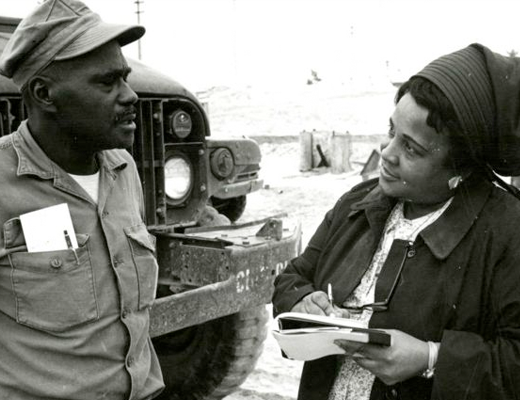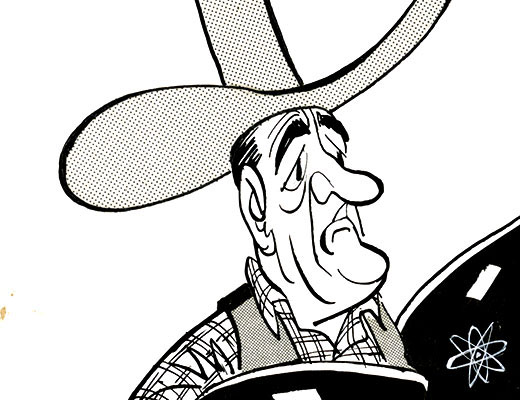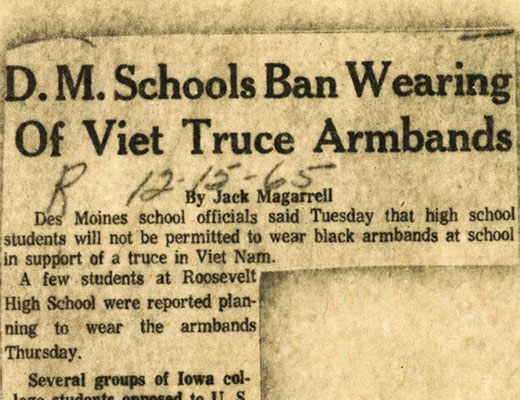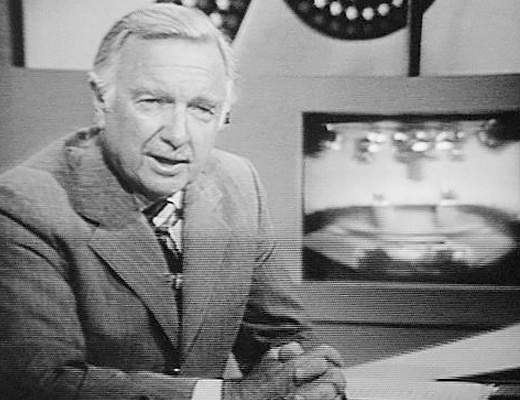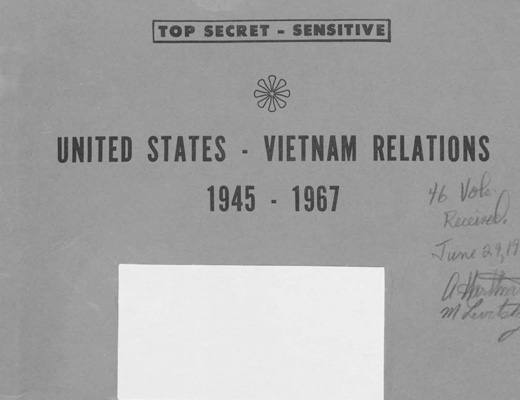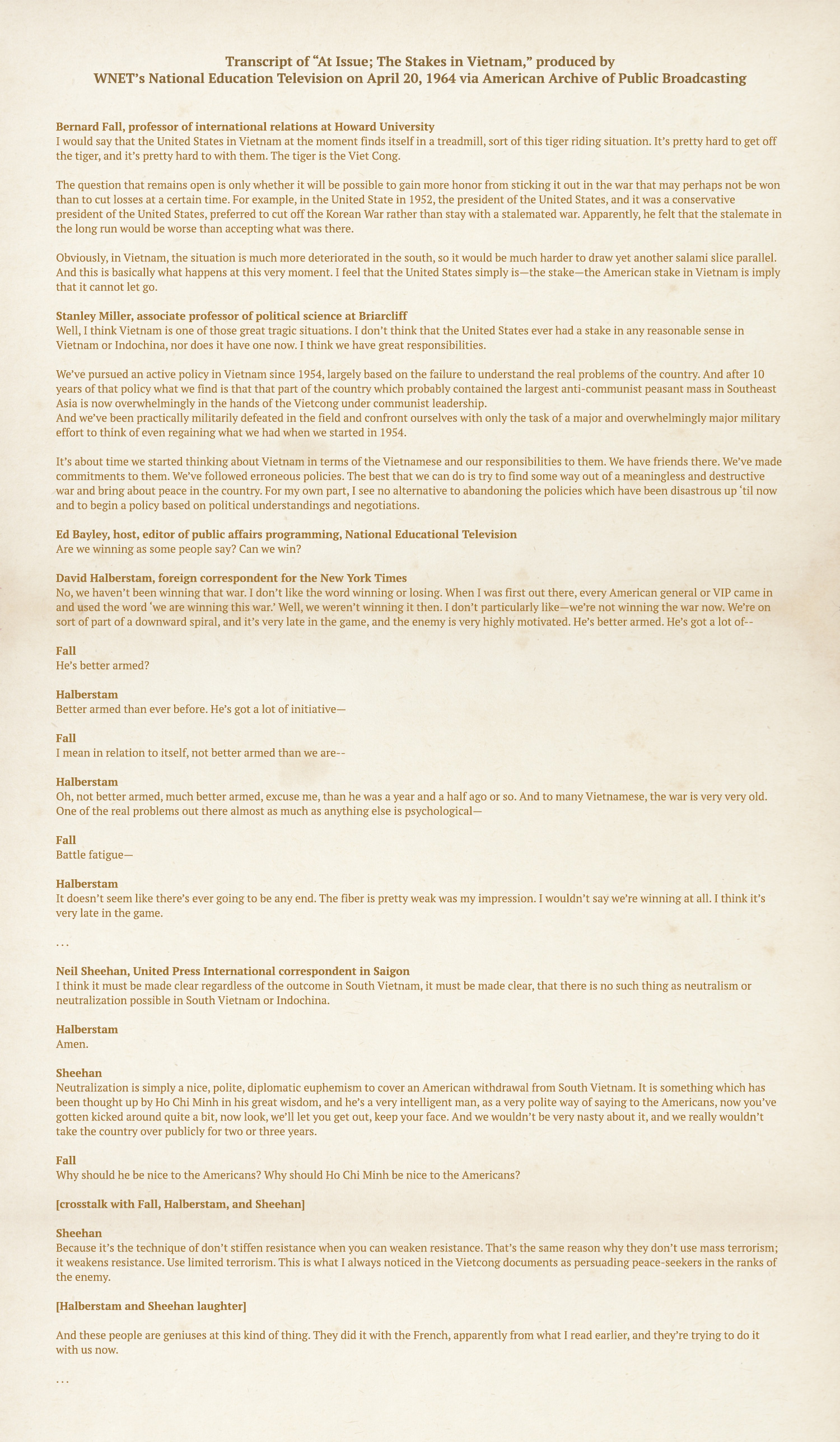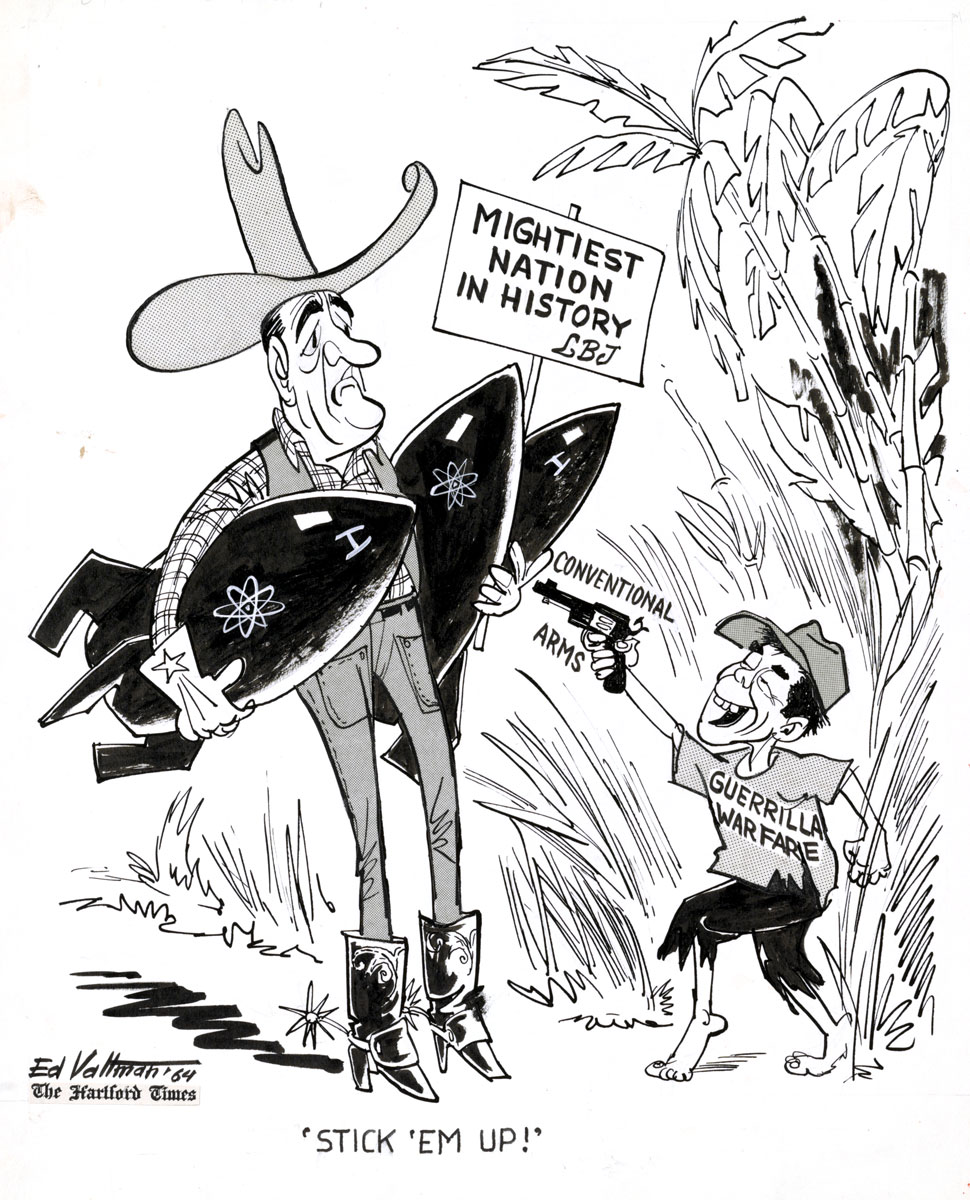The media presented different interpretations of the war in Vietnam. Sometimes they described it as a small country’s fight for freedom. Other times, they characterized the war as a lopsided contest between a superpower and a small, defenseless nation. In reality, the United States had emerged from World War II as the world’s major superpower, with massive nuclear weapons, while Vietnam was a former French colony, fighting a civil war with small, conventional weapons.
Like many reporters, Pulitzer-prize winning journalist David Halberstam, who covered the war for the New York Times in 1962–1964, initially agreed with the US government’s presence in Vietnam. However, Halberstam also challenged the US government’s optimistic version of the war, including the South Vietnamese Army’s first major defeat at the battle at Ap Bac in 1963, which earned him the disapproval of the Kennedy administration.
Directions
Read the excerpt from the WNET news show “At Issue; The Stakes in Vietnam.” Guests include Vietnam reporters David Halberstam and Neil Sheehan, Prof. Bernard Fall of Howard University and Prof. Stanley Miller of Briarcliff with host Ed Bayley.
Source: WNET’s National Education Television, “At Issue; The Stakes in Vietnam.” April 20, 1964. Permission has been granted for educational purposes only, courtesy of WNET via American Archive of Public Broadcasting (WGBH and Library of Congress).
Professor Bernard Fall of Howard University (left) and journalists David Halbertstam (center) and Neil Sheehan (right) on WNET’s National Education Television, “At Issue; The Stakes in Vietnam.” April 20, 1964. Permission has been granted for educational purposes only, courtesy of WNET via American Archive of Public Broadcasting (WGBH and Library of Congress).
Questions
Puzzler
Directions
Take a look at different sections of the political cartoon one-by-one and answer the questions that accompany each section. At the end, you will see the completed cartoon.
Source: In "Stick 'em up!" by Ed Valtman, President Lyndon B. Johnson is holding nuclear bombs and is being held up by a character representing guerilla soldiers in Vietnam. The Hartford Times. June 9, 1964. Library of Congress
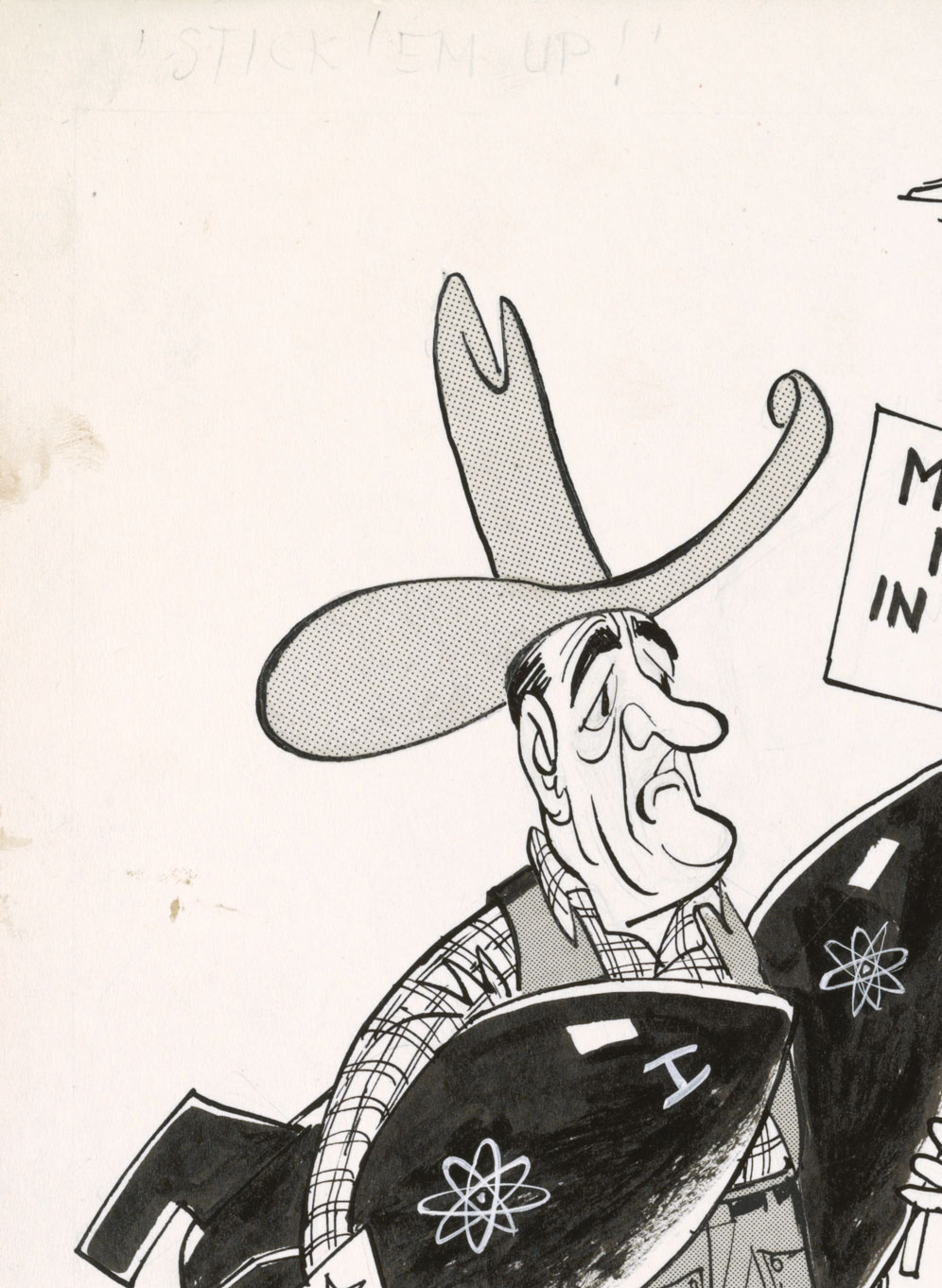
Cropped Image 1
1. What expression is the man making?
2. Why does the artist use caricature to portray the man?
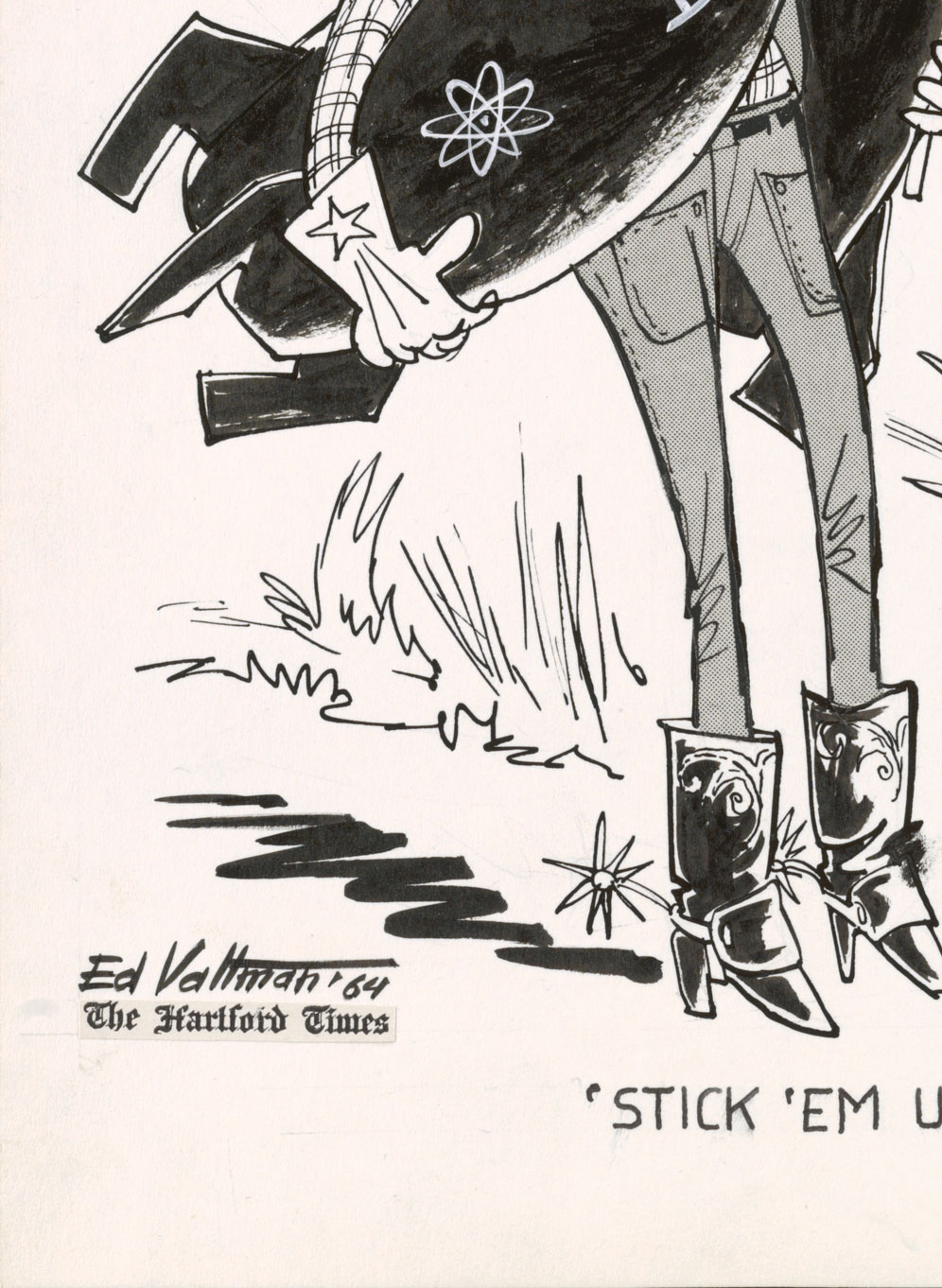
Cropped Image 2
1. Where might the cartoon be taking place, given the background details?
2. What label or symbol seems the most important to you at this point and why?
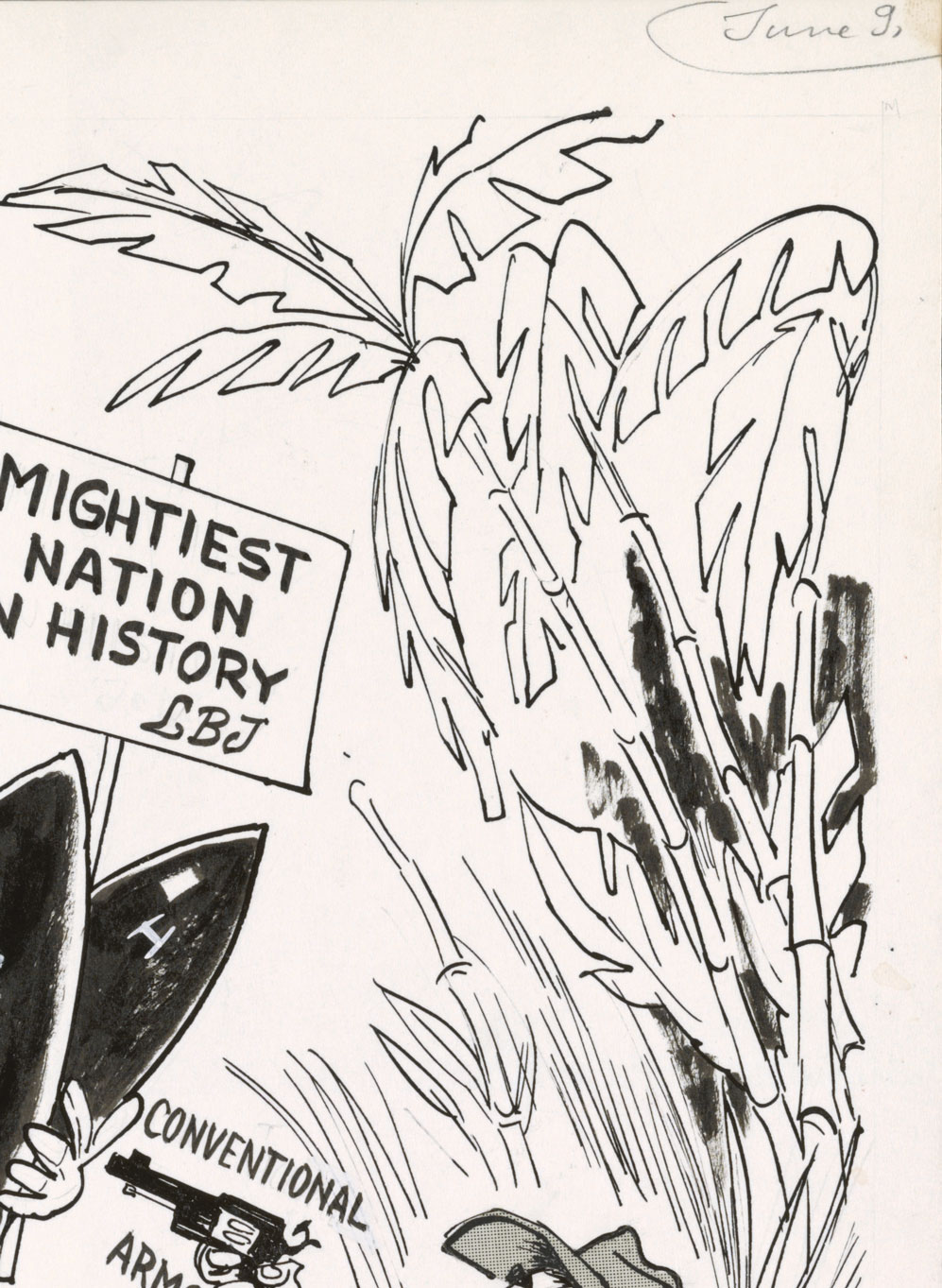
Cropped Image 3
1. Who was LBJ?
2. What do you think the cartoon is about at this point?
